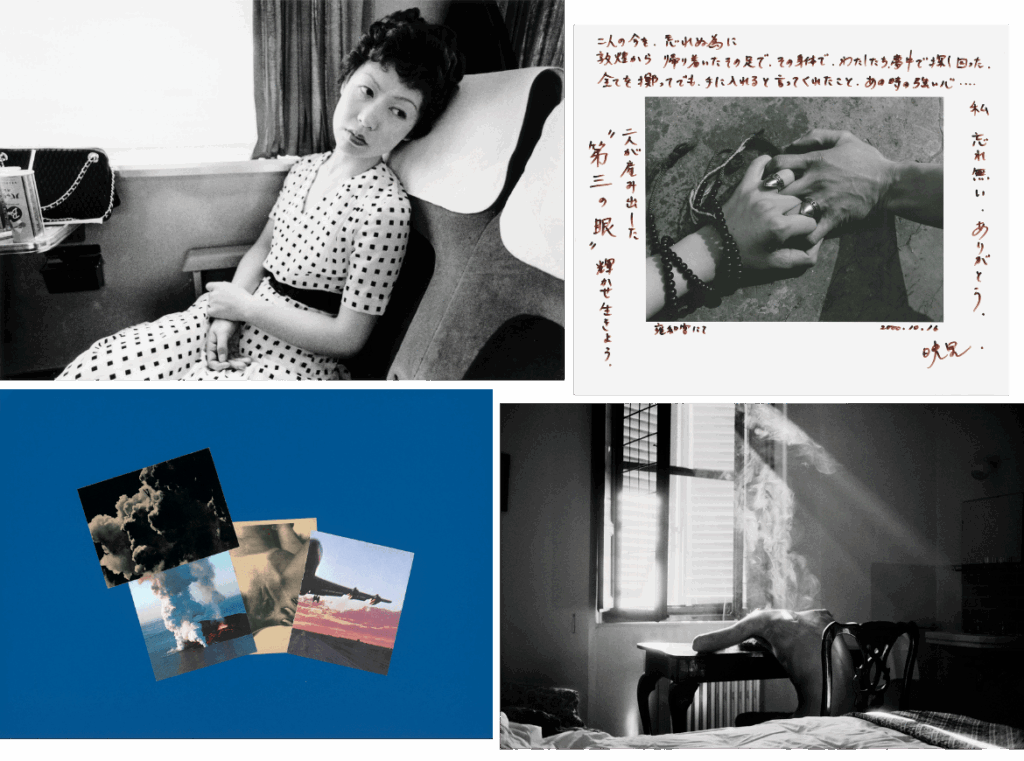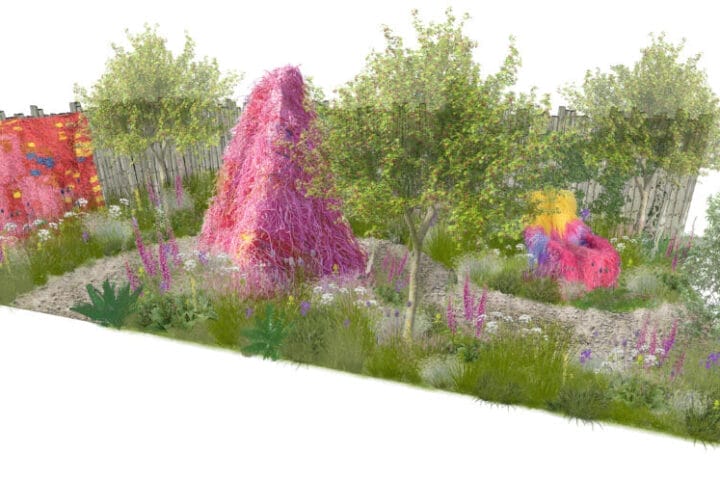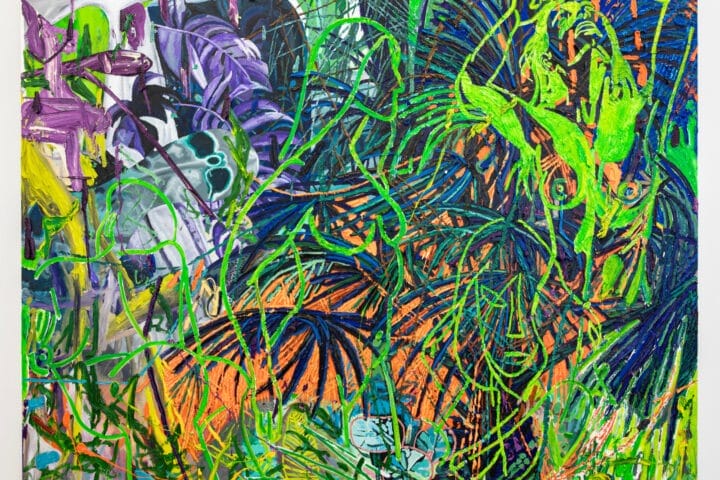NEW YORK, NY (April 20, 2023)—The International Center of Photography (ICP) explores love and desire through intimate images taken by lovers in a group exhibition this summer. On view from June 2 through September 11, 2023, Love Songs: Photography and Intimacy features over 250 works throughout ICP’s galleries, presenting photographic projects that read as personal stories by 16 international artists, including Nobuyoshi Araki, Ergin Çavuşoğlu, Motoyuki Daifu, Fouad Elkoury, Aikaterini Gegisian, Nan Goldin, René Groebli, Hervé Guibert, Sheree Hovsepian, Clifford Prince King, Leigh Ledare, Lin Zhipeng (No. 223), Sally Mann, RongRong&inri, Collier Schorr, and Karla Hiraldo Voleau.
Revealing private and powerful intimate relationships, Love Songs includes series dating from 1952 to 2022 by some of the leading and emerging photographers of our time that express complex, elusive, and contradictory entanglements. Taking us through personal, often unseen stories between different couples—from the first days of an affair through marriages, honeymoons, domestic bliss and the pain of separation, even to death and the last days shared between loves—the intimacies depicted by these artists are rarely seen in the history of photography and offer images of love that range from poetic, to romantic, to raw.
“This summer, ICP will turn over the entirety of our exhibition spaces to powerful, intergenerational stories of love in the exhibition Love Songs: Photography and Intimacy,” said David E. Little, Executive Director of ICP. “This major exhibition offers a unique viewpoint into how relationships are photographed and presents images of intimacy rarely represented in photographic history with such openness and directness. We look forward to welcoming audiences to explore and connect with Love Songs, which is an international collaboration with our friends at the Maison Européenne de la Photographie (MEP), Paris, and curator Sara Raza, who remixed the international show at ICP.”

Love Songs explores the history of photography through the lens of love, inspired in part by the canonical work of Nobuyoshi Araki and Nan Goldin. The exhibition features work from Araki’s landmark books Sentimental Journey (1971), a visual diary of his honeymoon with his wife, Yoko; and Winter Journey (1989-1990), which documents the final months of Yoko’s life until her death at age forty-two. Placing his own life at the center of the work, Araki blurs the lines between moments of intimacy and insignificance, as the love story transforms into a tragedy. A selection of raw, color-saturated, yet tender photographs from Goldin’s The Ballad of SexualDependency (1973-1986) are also included. Originally presented as a slideshow accompanied by a soundtrack of music by Nico, Maria Callas, and James Brown, Goldin recorded the spontaneous and unfiltered daily life of her friends, showing the vulnerability and sometimes brutality of romantic relationships.
Personal Letters (2000) marks the first chapter of the love story of RongRong&inri, the working name of two artists. The lovers embarked on an impassioned correspondence from September through November 2000, mailing each other photographs with promises of eternal love handwritten with ardor on the borders of the prints, expressing the intensity of their emotions and their desire to be together forever. Hervé Guibert met Thierry Jouno in 1976; his series Thierry (1976–1991) chronicles their passionate 15-year relationship. Guibert’s photographs of Jouno in hotel rooms during their travels are sensual portraits in which he reveres his lover’s nude body.
L’oeil de l’amour (The eye of love) (1952) by René Groebli is radically intimate, bringing the viewer inside the domestic and romantic space of a Paris honeymoon. Groebli chronicles lazy days in a hotel room with deep and loving closeness, as if he wished to remember every second of time spent together—his wife dressing and undressing, the unmade bed, a bottle of wine on a table, her hand holding a lit cigarette. Filled with joy, tenderness, and a tinge of melancholy, Motoyuki Daifu’s Lovesody (2008) candidly captures his experience of falling in love with a single mother of a two-year-old boy while she was pregnant with her second child. An unvarnished portrait of their daily lives, the photographs show their small, chaotic apartment cluttered with toys, piles of clothes, and half-eaten food, displaying the vulnerability and uncertainty of the moment.
Clifford Prince King’s 2019 works celebrate queer Black love and Black liberation, disrupting norms of culture, gender, identity, and race. His intimate color photographs, some staged, depict private spaces inspired by and drawn from real and imagined moments in his life and community. Lin Zhipeng (No. 223)’s Photographed Colors of Love (2005-2021) documents the defiant youth of China exploring their sexuality and freedom in the face of an authoritarian regime. His colorful and pattern-filled images feature his friends and lovers, and depict a generation trying to live authentically, free from taboos around gender, homosexuality and desire.
Collier Schorr’s Angel Z (2020-2021) is a collaborative project made with her artistic and romantic partner Angel Zinovieff, who writes: “When I look at you with the camera in your hand looking at me, there is a difference between that and what I see when the camera is not present. It is different because the camera is a third presence, a witness.” Schorr invites us to penetrate the intimate space of their relationship, questioning the tension between private and professional relationships. In Proud Flesh (2003–2009), Sally Mann documents her husband Larry’s late-onset muscular dystrophy, creating images of great vulnerability, frailty, tenderness, and mortality. In Hephaestus (titled for the Greek god of blacksmiths, Larry’s profession), marks on the image evoke scars, and other works have a feeling of forensic documents.
Aikaterini Gegisian’s 2019 series of photographic collages on paper and book titled Handbook of the Spontaneous Other include found pop culture materials from the 1960s and 1970s, such as adult magazines, travel journals, and National Geographic. Gegisian’s process of “de-collaging” rebels against and emancipates commodified and fetishized images. A 2021-2022 series of mixed-media assemblage works by Sheree Hovsepian evoke fragmented and abstract contours of the female body. Using her sister as her model and a stand-in for herself, Hovsepian plays with ideas of kinship, resemblance, self-love, eroticism, subjugation, and mythology of the female form.
Silent Glide (2008), a three-screen video installation by Ergin Çavuşoğlu, offers a fractured narrative about the imminent separation of a pair of lovers, set against the backdrop of the picturesque sea and industrial landscape of Hereke, Turkey. Çavuşoğlu explores the inner turmoil and the quest for meaning that leads to the couple’s breakup. Fouad Elkoury’s series On War and Love (2006) depicts the demise of an intergenerational romantic relationship, overlapping with the thirty-day period of war in Lebanon from July 13 to August 14, 2006. Featuring daily diary entries of photographic montages layered with handwritten notes, the work reveals the wounds of personal and political life.
For his 2010 project Double Bind, Leigh Ledare photographed his ex-wife in a country cabin, then asked her current partner to do the same, producing two sets of near-identical images. Ledare juxtaposes the photographs with a large collection of printed ephemera, exploring the psychology of how one “reads” images and comparing a broken marriage to a burgeoning love. In Another Love Story (2021), Karla Hiraldo Voleau restages photographs from a former relationship with a man known, in this context, only as X. After discovering that he had been leading a double life and living with another woman, Voleau cast a model to play the role of X and visited locations they had spent time together to reenact intimate moments from their relationship before the moment of betrayal.
The exhibition is organized in collaboration with the Maison Européenne de la Photographie (MEP), Paris, based upon an original idea by Simon Baker, and was curated at MEP by Frédérique Dolivet and Pascal Hoël. The exhibition includes 118 works on loan from the MEP’s collection. The New York presentation of Love Songs is organized by curator and writer Sara Raza, who remixed the show to feature new work. The English-language catalogue for the exhibition is published by ICP and DAP.
“I’ve recut and reordered the original visual playlist of the Love Songs exhibition to include bodies of work by artists whose subversive photographic and filmic practices rely on the montage technique of interweaving art and ideas of our time,” said curator Sara Raza. “These works offer a window into the themes of aftermath, contradiction, collision, desire, distortion, and reality.”
About the Curator
Sara Raza is an award-winning curator and writer specializing in global art and visual cultures from a post-colonial, post-Soviet perspective. She is the author of Punk Orientalism: The Art of Rebellion (Black Dog Press, London 2022). Raza has curated for the Solomon R. Guggenheim Museum (New York), Mathaf: Modern Arab Art Museum (Doha, Qatar), and the 55th Venice Biennale, among others. Formerly, she was the Guggenheim UBS MAP Curator for the Middle East and North Africa at the Solomon R. Guggenheim Museum, and Curator of Public Programs at Tate Modern, London. Sara holds a BA and an MA, both from Goldsmiths College, University of London, and pursued studies towards her PhD at the Royal College of Art, London. She lives and works in New York City, where she teaches at the School of Visual Arts and New York University.
Exhibition Access
ICP is open every day except Tuesday from 11 AM to 7 PM, and until 9 PM on Thursdays. Admission: $18 for adults; $14 for seniors (62 and over), military, and visitors with disabilities (caregivers are free); $12 for students (with valid ID); $3 for SNAP/EBT card holders; free for ICP members, ICP students, and all visitors 14 years and under. Admission is by suggested donation on Thursdays from 6 to 9 PM. Tickets can be reserved online at icp.org/tickets. Visitors are asked to arrive during the 30-minute window of their timed ticket to help ensure a safe flow in the lobby. For more information, read ICP’s updated Visitor Information and Accessibility guidelines and policies.
Exhibition Support
Exhibition support has been generously provided by the ICP Exhibitions Committee. Exhibitions at ICP are supported, in part, by public funds from the New York City Department of Cultural Affairs in partnership with the City Council and by the New York State Council on the Arts with the support of the Office of the Governor and the New York State Legislature.










